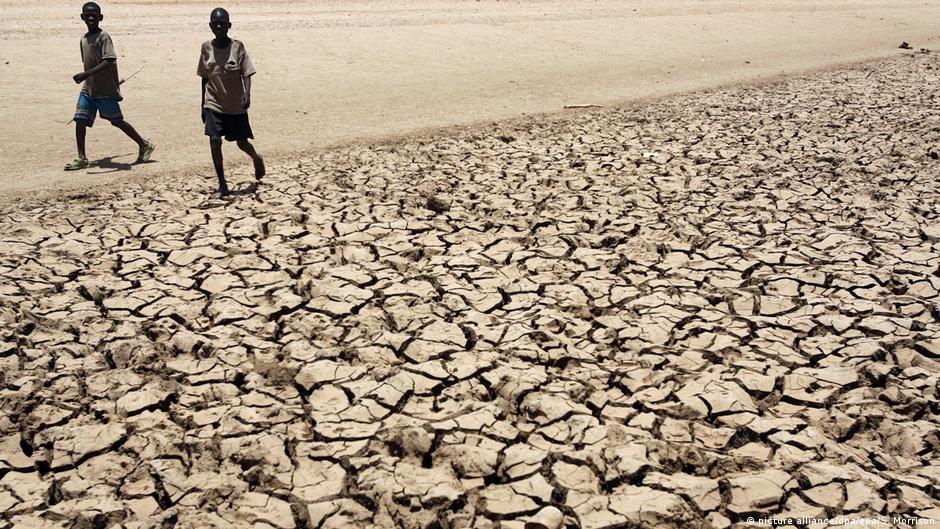Drought in Kenya

According to the Organisation for Economic Co-operation and Development's Environmental Outlook to 2030 report, 47% of the world’s population will be living in areas of high water stress by 2030. This proportion is reflected in Kenya’s current state of humanitarian crisis (OECD, 2008); 23 out of 47 counties and have declared a state of drought emergency. Water shortages and declining water availability exacerbate the spread of deadly disease and food insecurity across the country, in turn fuelling the existing tribal tensions between different groups. The competition for water continues to grow in step with population pressure, leading to extreme instability of community relations where “fighting could break out at any moment” (Oxfam, 2017). Women and children are particularly vulnerable and susceptible to these consequences (OCHA, 2017). This post will explore some of the specific consequences that have arisen as a direct result of this resource shortage with a specific focus on the tensions between the bordering communities to Uganda.
The severity of the drought in Kenya has heightened, mostly due to the three consecutive rainy seasons bearing below average rainfall, reducing the crop yield and leaving 4 million people in severe shortage of food (Oxfam, 2017). Scarce resource availability has a direct effect on community relations and has sparked severe disputes between villages and counties. Clashes between the nomadic Turkana and Karamajong near the border to Uganda arose from the geographical dependence on the same water source in the North Rift (FEWS Net, 2018), which is of critical importance for livestock sustenance and their livelihood. Availability of and access to water is scarce and under increasing pressure, which has lead to increased tension between the pastoralist communities in the form of armed conflict, farmland raiding and cattle rustling. A lack of policing and mismanaged state security enforcements contribute to the unstable relation between these communities.
To prevent further escalation of conflict, community initiatives like the Isiolo Peace Committee have formed in efforts to control the increasingly destructive violent outbursts. Despite their efforts to reduce tensions in the area, cross-border flow of arms from ‘unstable countries’ like Somalia and Ethiopia to the area exacerbate tensions and exceed the community level of authority and the situation remains critical.
International aid organisations have attempted to implement a humanitarian strategy, take UNICEF’s engagement with the decentralised governmental system for example (UNICEF, 2017). Through supporting the individual county capacities for emergency responses, UNICEF is able to directly equipe local and national coordination. However, insufficient infrastructure and a general inaccessibility remains a large issue that prevents many populations to receive this humanitarian aid. The severe drought periods were followed by intense rainfall in early March 2018 that caused extreme flash floods, which destroyed cropland in riverine areas but generally drove arid, drought struck areas towards food stability and recovery from exhausted water sources. Future relations between the tribes Turkana and Karamajong and other neighbouring communities remain under extreme tensions and although they rely on humanitarian aid programmes, these can create a certain dependency that is in no way sustainable for the management of shared water sources, especially under the current high rates of water extraction.
References
OECD. (2008). OECD Environmental Outlook to 2030. OECD: Paris.
UNICEF. (2017). Kenya: Humanitarian Situation Report. UNICEF: New York.
FEWS Net. (2018). Kenya Food Security Outlook, June 2018 to January 2019. Famine Early Warning System Network; USAID: Washington.
OCHA. (2017). Kenya: Humanitarian Dashboard. United Nations Office for the Coordination of Humanitarian Affairs: Geneva.
Oxfam. (2017). Kenya Drought Crisis: A Call for Action. Oxfam: Oxford.
This is an excellent and interesting post. Illustrations or photos would be welcome! What is the situation now and what responses have succeeded/ What has been the official government response? Was this supply-driven (i.e. providing more water) or demand-driven (people using less water)?
ReplyDeleteThank you for your comment, Richard. Government intervention was limited at the start, but has grown in the form of awareness campaigns for farmers, a national drought response plan that is funded by the government and a government safety net programme. Overall, non-governmental organisations are working closely with the government for funding and strategic plans that have successfully targeted inaccessible communities (which I briefly mentioned in the post). Issues of accessibility remain of course. This I think was supply drive, as north- and southeastern agricultural areas were already experiencing water stress and famine. Demand for fresh water was therefore pre-existing but people were not consuming less in order to prevent complete exhaustion of the rest sources. I hope this clarifies the current status of the drought.
Delete